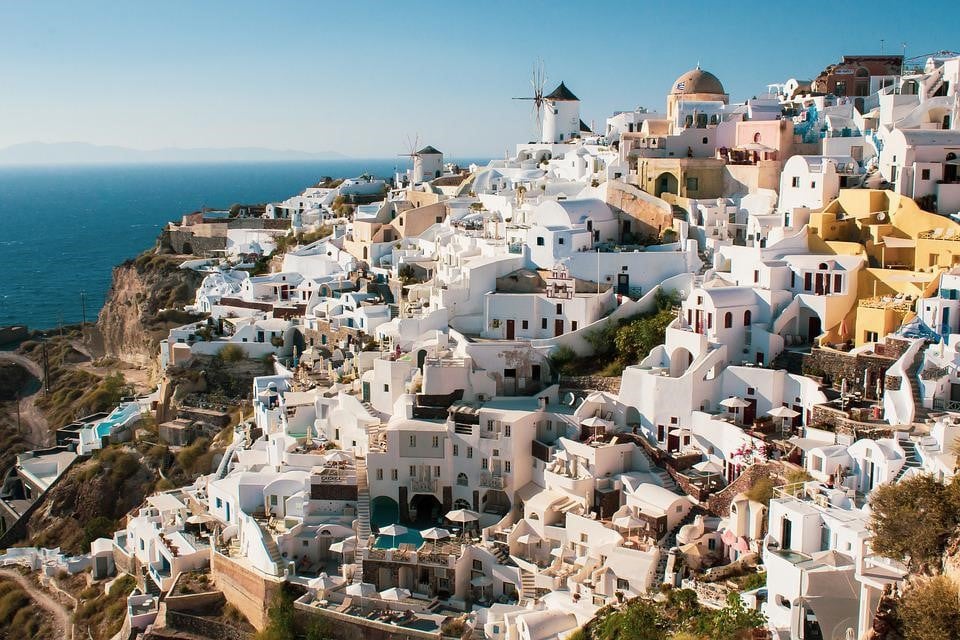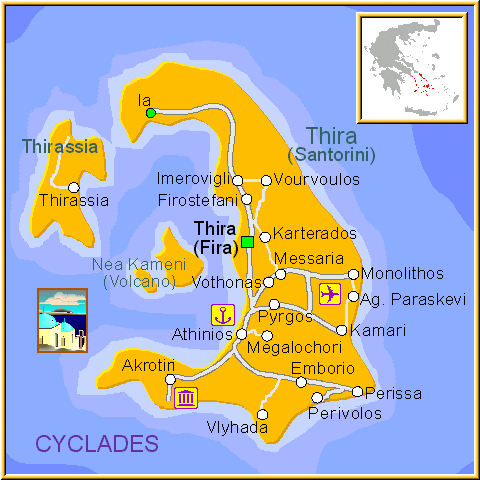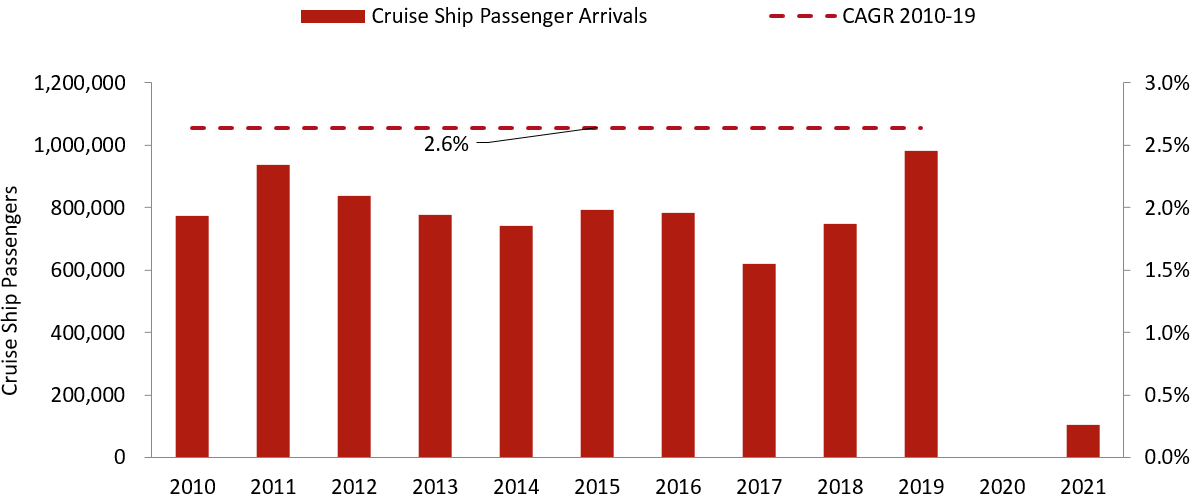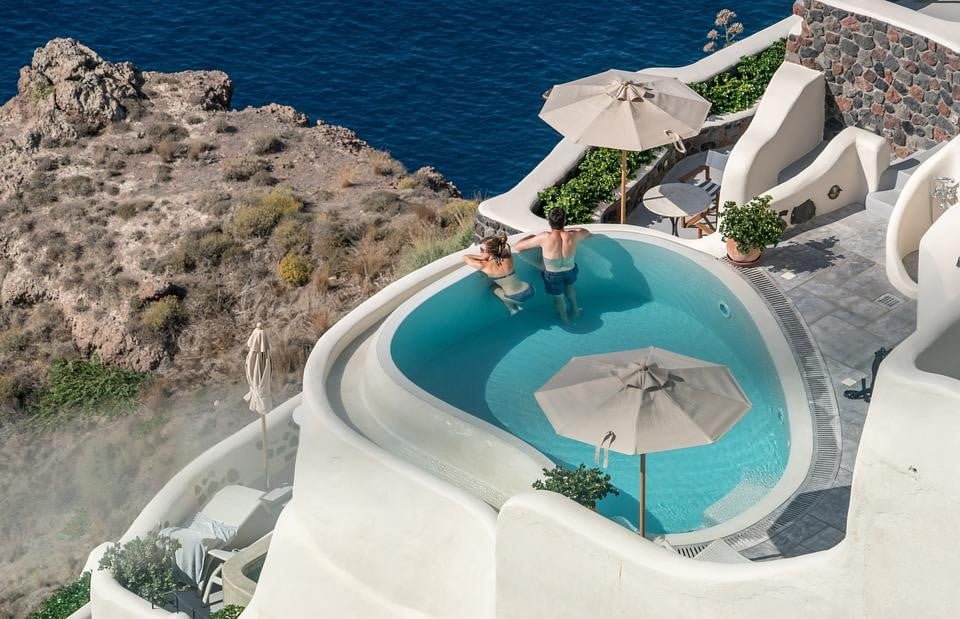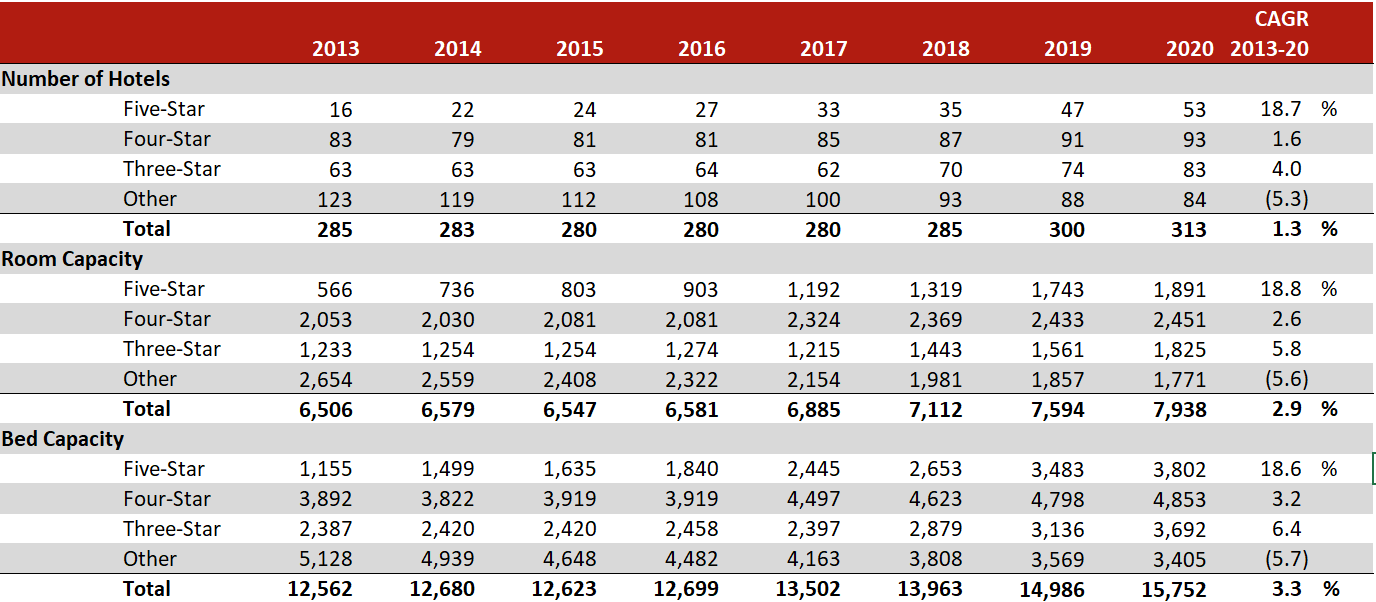By Nana Boussia, Pavlos Papadimitriou
If there is one destination within Greece that lives up to its fame as one of the most alluring destinations in the world that is Santorini. Visiting the island with the dramatic landscapes and unique terrain, part of the legacy of a violent volcanic eruption that took place in the second millennium BC, is on the bucket list of every savvy traveler. Thousands of tourists that visit Greece flock to the island of Santorini to admire the caldera-perched villages, the authentic local architecture with its cave houses dug into the volcanic rocks, the captivating sunsets, and the cultural antiquities buried and preserved under the volcanic ash that buried the island. At the same time, by virtue of its cosmopolitan fame, Santorini boasts some of the most luxurious accommodation options across the country, and a vibrant gourmet scene partially attributed to its winemaking tradition. International hotel brands are currently entering the market, through franchise agreements, making the market scene even more active and sophisticated. Santorini’s huge popularity, however, has sadly come at a price as the island is currently coping with the negative effects of overtourism.
Overview
Santorini is a small, circular archipelago of volcanic islands located in the south Aegean Sea, about 200 kilometers southeast of Greece’s mainland. It is also known as Thera (or Thira), forming the southernmost member of the Cyclades group of islands, with an area of approximately 73 km² and a population of 15,250 (2011 census). It has a total land area of more than 90 km² including the uninhabited islands of Nea Kameni, Palaia Kameni, Aspronisi, and Christiani. All five islands are arranged in a ring around a giant caldera—i.e. a large volcanic crater—that’s almost submerged beneath the Aegean Sea. The caldera is the result of the Minoan eruption, which was the biggest volcanic eruption of them all that took place around 1613 BC. While most of the caldera is filled with water today, what’s left of it above ground is a semicircle of land on Thira (Santorini) that faces west and has become the most well-known part of the island.
The modern history of Santorini begins in 1956 with a devastating earthquake that severely damaged the island’s infrastructure. Santorini had survived on manufacturing, agriculture, and quarries, but after a period of reconstruction in the 1970s, it concentrated its efforts on the growing tourism industry, which today remains the largest contribution to the island’s economy. Although winemaking has been a major factor, too, that process was modernized after the 1956 earthquake into the industry that exists today.Today Santorini is one of the best and most recognized tourist destinations in the world. Due to its unique beauty enhanced by the volcano and the breathtaking views of the Aegean Sea, and its famous sunset, the island is well-positioned in the niche market of weddings and honeymooners as an ideal destination. The island is also seeking to develop theme tourism, such as gastronomy tourism, wine tourism, and cultural tourism, in its bid to become a year-round destination.
Accessibility
By Air
Santorini is served by one airport, the Santorini International Airport, located north of the village of Kamari, approximately six kilometers southeast of the center of the city of Thira. The airport serves both as a military and as a civil airport. The airfield can accommodate medium-sized jets as well as smaller aircraft scheduled airlines including Ryanair, Olympic Air, and Aegean Airlines, with seasonal scheduled and charter flights from other airlines during the higher seasons in spring, summer, and fall. There are currently 75 airlines offering flights to Santorini, with their number rising and flights arriving from dozens of countries, reaching as many as 57 a day during the summer months. As part of its mandate for taking over management and operations at the 14 airports, Fraport Greece realized a comprehensive plan for the modernization and development of the airports. The company’s plan included immediate projects and development works for upgrading the airports’ facilities, which contribute significantly to improving the overall customer travel experience while responding to the expected increase in passenger traffic.
Chart 1: Airport Arrivals 2010-21
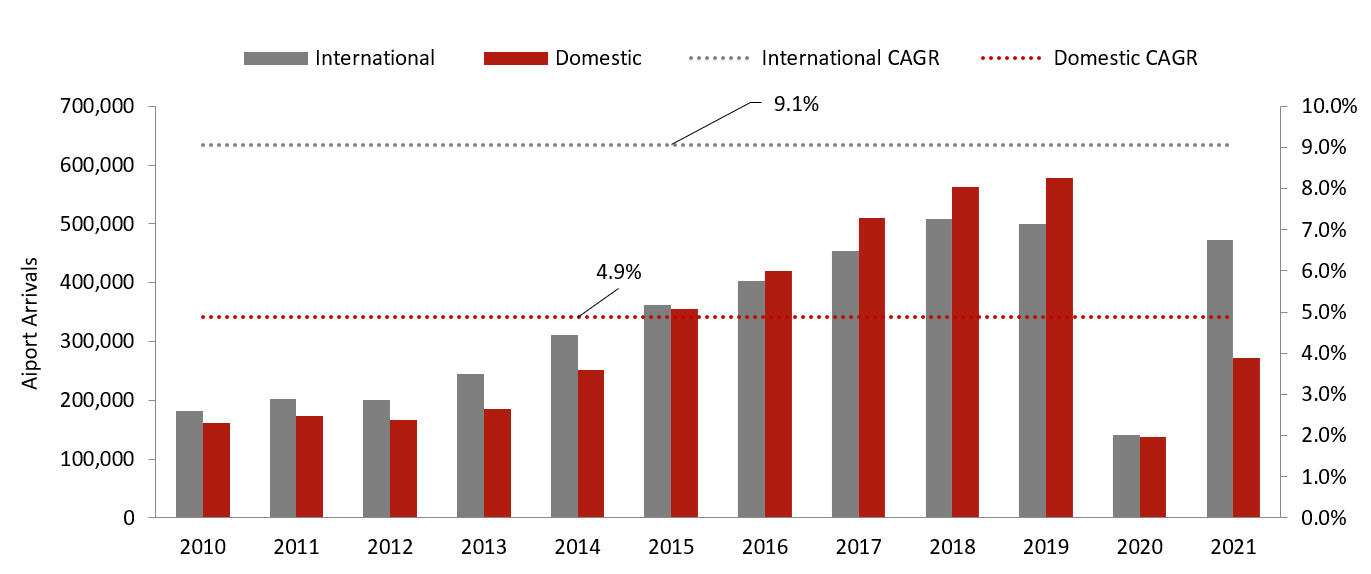
Source: Hellenic Aviation AuthorityThe airports have tripled the number of passengers since 2010, while during the last years, prior to the pandemic, the island accepted more than 100,000 additional airport passengers each year showing the dynamics of the market but also the fact that sea access to Santorini is less convenient than to other Greek islands due to its far distance from the main Greek seaports. The devastating impact of COVID-19 is seen through the 2020 data, recording a decrease of approximately 75% compared to last year. Results for 2021 however, indicate a tremendous recovery trend, especially in international arrivals. According to the latest data, international arrivals for 2021 are only 5.5% below 2019 levels highlighting both the resilience of the specific sector and the indisputable worldwide fame that the island enjoys.
By Sea
Santorini has four seaports that serve not only cruise ships and ferries but also yachts and fishing boats.
- Athinios Port is where the ferries land in Santorini;
- Skala Port is built below Thira. Skala is the old port of the island where the cruise ships put anchor today;
- Amoudi Bay is situated below the village of Oia. Due to its small depth and size, it doesn’t accommodate big vessels. From Amoudi there are small boats that sail to the island of Thirassia. Also, some boat tours start and end there;
- Vlychada Port is next to the beach of Vlychada. This is where small fishing boats and yachts put anchor. Many boat tours start and end here too.
Santorini authorities are planning a major overhaul of its maritime infrastructure. A new marina budgeted at 40 million has been recently approved for development in the area of Monolithos. It will have 350 berths up to an unspecified superyacht size. It will be run by the Municipal Port Fund of Thira and it is anticipated that 120 new jobs will be created once it is completed.
Chart 2: Cruise Ship Passenger Arrivals 2010-21
In 2019 Santorini welcomed almost a million cruise ship passengers who stop by the island either for a few hours or one day, a figure increased by 30.9% as compared to 2018. This activity, however, is closely linked to the phenomenon of overtourism that Santorini is dealing with during the last years.TourismThe tourism product in Santorini is driven by individual tourists (accommodated in luxurious hotel units), and by group leisure tourism visiting mainly off-season, while a significant sub-market is the so-called “honeymooners” who travel to Santorini for their wedding ceremony and banquet. This niche market segment has rapidly developed on the island from 1998 when there were only 150 weddings to 2018 with an estimated 900 weddings. In general, Europe represents the dominant source region for visitation to Santorini by air. Nevertheless, incoming tourists from China and the U.S.A. are also numerous and represent a high proportion of the island’s total international visitation, but most commonly arrive by boat or plane from Athens or as part of a cruise in the Mediterranean Sea. Although Santorini accepts the main volume of tourists during summers it is considered to be the only Greek island that has managed to substantially extend its seasonality and feature a smoother seasonality pattern. According to tourism professionals, the island will be the first island to achieve the target of all-year tourism. It is worth mentioning that some 100 hotels remained open throughout the winter of 2019, representing one-eighth of the island’s total accommodation capacity, in order to serve visitors in the winter months.
Hotel in Oia
The island’s market is divided into two distinguished parts:
- The cliffs to the west of the island, are dominated by small ultra-luxury hotels and villa complexes offering unobstructed views towards the famous volcanic Caldera, and achieving the highest average rate on a national level (especially the ones located in the settlements of Oia and Thira);
- The beachfront hotels developed on the east side are mostly new developments, with a higher number of rooms, and are preferred by groups of tourists, and families (which for safety reasons are not allowed in the hotels built on the cliffs). These hotels satisfied the increased investors’ appetite for presence on the island of Santorini, as due to land shortage and building restrictions they had limited options for development in the western part of the island. Consequently, these new developments opened the way for international brands, which were also eager to enter the market, through franchise agreements.
Coping with Over-tourism
There is growing concern that Santorini cannot cope with its burgeoning popularity for much longer. The island is just 76 km² -and traffic jams and overcrowding have become an issue, as has rising water and energy consumption. What is striking about the case of Santorini is that the development pressures on the island did not slow down even during the decade of economic recession. On the contrary, by 2019 Santorini experienced a frantic growth – stopped by the pandemic and the lockdowns – which made the Municipality of Thira one of the richest in the country. At least 11% of the island has been concreted over in recent years, something that only compares with Attica while the population has shot up to 25,000 [from 15,500 in 2011].
Private and public authorities are intensively working on the establishment of strategic solutions that can lead to a more sustainable future for the island. Actions centered around the balance between the visitors’ numbers and the island’s carrying capacity are on top of the agenda. Other actions of primary concern are related to the improvement of infrastructure, the application of sustainable environmental practices by everyone involved in the tourism industry, and the strengthening of local communities.
In August 2020, the Greek Ministry of Environment & Energy recently suspended the issuance of new building permits for tourist accommodation facilities on plots of land outside planning zones on the islands of Mykonos and Santorini. The decision, which specifically concerns the construction of new buildings of tourist accommodation, special tourist infrastructure facilities, and other tourism businesses, was signed aiming to slow down construction activity while the town planning for the two Cycladic islands is in process. According to Environment and Energy Minister, the suspension of building permits will last until the Special Urban Plans for both islands are approved. The plans are expected to set clear rules on the building capacity of the two islands. Excluded from the suspension are plans that have already been pre-approved by the department of urban planning or applications for revisions to permits that have already been submitted.
Basic Visitation Factors
Visitation at hotels in Santorini has been mainly of international nature; foreign visitation accounted for more than 85% nearly every year while their contribution has reached more than 90% of the total accommodated bednights. It should be also noted that until 2017 only 40-to-50% of the hotels provided data to the Hellenic Statistical Authority while from 2018 all hotels on the island were obliged to communicate their visitations results to the Ministry of Tourism.
Chart 3: Basic Visitation Factors – Santorini (Including the small island of Anafi), 000s 2010-20
In general, the international segment has demonstrated increased resilience over the last years, reaching a peak in 2011, and decreasing thereafter, owing to a mix of the global economic uncertainty together with the negative publicity Greece received over the 2010-12 period, and vigorously recovering in 2013-14. Year after year international visitation experiences new record-breaking levels. Domestic tourism recorded significant shrinkage from 2010 to 2012, mainly on account of the decrease in local business activity and the consequent reduction in disposable income. From 2012 onwards, domestic visitation in hotel properties in the region shows relative stagnation. The number of tourists kept growing thereafter as a result of the expansion of the tourism season and the addition of new hotel properties.
The average length of stay for international travelers remained relatively unaffected throughout these years ranging between three and four days while seasonal bed occupancy went through more intense fluctuations.
The devastating impact of COVID-19 is seen through the 2020 data, recording a decrease of approximately 79% and 59% in international and domestic bednights respectively while many hotel units on the island stayed closed.
As for 2021, the tourist traffic in Santorini was particularly high according to press releases, with the island’s hoteliers declaring themselves satisfied with this season, despite the difficulties they experienced due to the pandemic. According to the president of the Santorini Hotel Association, during the second half of July and August, there were many last-minute bookings that rocketed the occupancy rates to more than 90% and ultimately reached 2019 levels. As for September occupancy rates remain unexpectedly high, at 85% and 75% during the first and second half, respectively.
Hotel Supply
The majority of hotels in Santorini are classified as one- and two-star, while five-star units account for only 17% of the total hotel supply in 2020. Nevertheless, five- and four-star hotel units together represent about 55% of the total number of available rooms and beds. In 2020, the average five-star hotel in Santorini featured 36 rooms, a figure that remained unchanged since 2012.
Chart 4: Hotel Supply 2013-20
Source: Hellenic Chamber of Hotels
The small number of rooms featured by luxury hotels is due to various limitations such as building coefficient, and architectural restrictions, especially in Oia, where the most luxury properties are located. It is evident that investors on the island favored the construction of luxury properties, since the number of five-star units reached 53 from 16 over the past eight years, while five-star rooms and beds increased by more than three times. To overcome the problem of land shortage and space limitation, and given the sustained growth of tourists, five-star hotel investors have started developing luxury projects in less congested areas of the island where they will be able to generate more roomnights at lower rates though.What is striking is that only during the last three years 18 new five-star hotels have been added to that island’s supply displaying the increased luxury investment appetite. Regardless of this growth, branded hotel supply on the island was, until recently, almost non-existent mainly due to the limited number of rooms featured by luxury hotel properties but also due to the fact that the owners of the properties, located in Oia and Fira, have witnessed remarkable revenue growth even without being associated with a brand. Mystique Resort, a Luxury Collection Resort in the settlement of Oia, and Vedema Resort, a Luxury Collection Resort in the area of Megalochori, were the first-ever branded properties on the island.Recently, investors or hotel owners, realized that properties built outside the widely known settlements of Oia and Thira could be associated with an internationally known hospitality brand, either by a franchise or a management agreement, to be able to command higher rates and prolong the operating season as compared to other unbranded hotels in the immediate area. This is the case of the Nikki Beach Resort and Spa Santorini, with 62 rooms, which started operations in 2019 in the area of Monolithos, the five-star TUI Blue Meltemi, the first-ever TUI branded hotel on the island opened in 2019 in the area of Perissa featuring 99 rooms, and the Radisson Blu Zaffron with 102 rooms which opened in July 2021 in the area of Kamari. Forthcoming branded properties include the new Sea Breeze Santorini Beach Resort, Curio Collection by Hilton which will launch in summer 2022, with 37 rooms in the area of Exomitis, and the new Magma Santorini Resort, Unbound Collection by Hyatt, set to open in summer 2022 with 59 rooms and suites in the area of Vourvoulos. The most recent announcement of an upcoming branded property is that of Nobu Santorini which is set to open in June 2022 with 30 rooms, in the area of Imerovigli, boasting Caldera views.
Finally, there are several hotels that have become members of hotel marketing consortiums such as Relais & Chateaux, Small Luxury Hotels of the World, Leading Hotels of the World, Great Hotels of the World, Historic Hotels of Europe, and Design Hotels.
Hotel Performance
The following chart provides an indication of the evolution of the performance of 22 hotel properties, comprising some of the most prestigious hotels in Santorini, located along the eastern coast of the island and overlooking the Caldera. The properties developed in this part of the island, are able to command the highest rates, among all properties on the island, in virtue of their unique location and the views they feature. Areas such as the renowned villages of Oia and Thira gather many of these properties. It should also be noted that all occupancy percentages refer to 365 days of operation for consistency reasons.
Chart 5: Performance of Selected Hotels 2018-20
Source: HVS Research
Santorini is one of the leaders in Greece, in terms of achieved performance. This is also reflected in the dynamics of occupancy and the average rate of the specific competitive set. Hotel operators in Santorini focus more on average rate rather than volume, as some of the most affluent tourists visit the island. The occupancy rate however is one of the highest recorded, on a national level, when compared to other Greek seasonal destinations. This is attributed both to the fact that Santorini is enjoying a worldwide reputation as one of the most sought-after leisure destinations, but also to the fact that the ministry of tourism and the island’s administrative authorities are intensely working on expanding its operating season and positioning Santorini as a year-round destination.
In 2019 occupancy slightly fell because of new hotels/rooms entering the market. The unfortunate event of the pandemic’s outbreak is depicted in 2020 results when hotel operators witnessed the occupancy of their hotels plummeting to unprecedented levels as traveling came to a halt; they managed however to keep the average rate on relatively high levels due to the profile of the island’s visitors. According to conversations with hotel professionals, in 2021 occupancy and average rate almost recovered to levels prior to the pandemic, highlighting the resilience of the destination.


